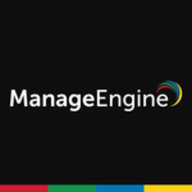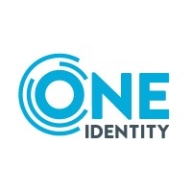

One Identity Active Roles and ManageEngine ADManager Plus are leading solutions in Active Directory management. One Identity appears to have the upper hand due to its extensive features and automation capabilities.
Features: One Identity Active Roles includes role-based access control, dynamic groups, and an intuitive web console, enhancing Active Directory management and integration with Azure and Office 365. It automates provisioning and deprovisioning tasks effectively. ManageEngine ADManager Plus is noted for user and group management simplicity and task automation, though it lacks some deep customization options available in Active Roles.
Room for Improvement: Users of One Identity Active Roles suggest improvements in web console customization and support for multiple scripting languages, including additional workflows and improved documentation. ManageEngine ADManager Plus could enhance customization intuitiveness and integration capabilities, with users pointing out support delays and upgrade complexities. Both products require UI improvements.
Ease of Deployment and Customer Service: Both One Identity Active Roles and ManageEngine ADManager Plus are typically deployed on-premises and offer solid customer service. One Identity provides responsive support and access to development teams, even though support scopes are limited. ManageEngine is praised for knowledgeable support, despite some delays and a need for more comprehensive solutions.
Pricing and ROI: One Identity Active Roles is at a higher price point, but users find the ROI justified due to efficiencies gained through automation and risk reduction. ManageEngine ADManager Plus offers competitive pricing with straightforward licensing, leading to positive ROI through reduced workload and increased productivity.
One Identity Active Roles provides excellent reporting and auditing functionality, allowing administrators to track permissions, actions, and responsibilities effectively.
It has saved 90% of the time compared to before.
Technical support from ManageEngine is very satisfactory.
One Identity's support is great.
I rate customer service and support as a seven because, although they are helpful when needed, there can be delays in responding to tickets and finding necessary fixes.
Sometimes having a fix for a bug takes too much time.
It is very beneficial for large and complex environments.
If you are a major enterprise customer, it is a matter of scaling out on resources with more memory, disk, and CPU power.
The solution is highly scalable, with a scalability rating of nine.
There were no major problems with One Identity Active Roles.
We haven't had any glitches.
I would rate the stability as a seven because there are sometimes performance issues, which require restarting the services.
Upgrading from recent to the latest versions is quite complex and time-consuming.
A way to connect to various directories and integrate with cloud directories would be beneficial.
Enhancements to the console are also necessary because it is more confusing than the web interface.
The user interface needs to be more modern and scalable.
The solution is perceived as cheap, and the licensing is annual.
It is quite expensive, costing more than 50 euros per identity.
The pricing is high.
The pricing of One Identity Active Roles is expensive, but the return on investment justifies the cost, allowing for savings in other areas.
The software is fast, secure, and enables me to manage everything in one place.
It's improved our security posture. It has limited access to our crown jewels, where all our identities lie within Active Directory.
It helps in removing custom Active Directory delegation, which enhances security by eliminating unnecessary privileges, addressing identity-based breaches by reducing the number of Active Directory delegations.
Dynamic groups are also one of the best features, eliminating the need to add or manage members manually.
| Product | Market Share (%) |
|---|---|
| One Identity Active Roles | 10.2% |
| ManageEngine ADManager Plus | 14.5% |
| Other | 75.3% |


| Company Size | Count |
|---|---|
| Small Business | 5 |
| Midsize Enterprise | 8 |
| Large Enterprise | 3 |
| Company Size | Count |
|---|---|
| Small Business | 7 |
| Midsize Enterprise | 2 |
| Large Enterprise | 17 |
ADManager Plus is an identity governance and administration (IGA) solution that simplifies identity management, ensures security, and improves compliance. With ADManager Plus, manage the user life cycle from provisioning to deprovisioning, run access certification campaigns, orchestrate identity management across enterprise applications, and protect data on your enterprise platforms with regular backups. Use over 200 reports to gain valuable insights into identities and their access rights. Improve the efficiency of your IGA operations with workflows, automations, and role-based access control policies. ADManager Plus' Android and iOS applications help with on-the-go AD and Azure AD management. For more information about ADManager Plus, visit manageengine.com/products/ad-manager/.
One Identity Active Roles is a highly regarded solution for Active Directory (AD) security and account management. One Identity Active Roles will enhance group, account, and directory management while eradicating the need for manual processes. The end result is a significant increase in the overall speed, efficiency, and security of the organization.
Using One Identity Active Roles, users can:
Managing accounts in AD and Azure AD can be tremendously challenging; continually keeping these important systems safe and secure presents an even greater challenge. Traditional tools can be inefficient, error-prone, and very disjointed. In today’s robust marketplace, organizations are finding it somewhat difficult to keep pace with the constant access changes in a hybrid AD ecosystem. Additionally, there are significant security issues to consider (government compliance, employee status/access changes, and other confidential business requirements). And, of course, there is a requirement to properly manage Active Directory and Azure Active Directory access in addition to managing all the other numerous SaaS and non-Windows applications that organizations use today.
Users can easily automate all of these tedious, mundane administrative tasks, keeping their systems safe and error-free. Active Roles ensures users can perform their job responsibilities more effectively, more efficiently, and with minimal manual intervention. Active Roles was created with a flexible design, so organizations can easily scale to meet your organizational needs, today, tomorrow, and in the foreseeable future.
Reviews from Real Users
A PeerSpot user who is a Network Analyst at a government tells us, “It has eliminated admin tasks that were bogging down our IT department. Before we started using Active Roles, if one of our frontline staff members deleted a user or group, it could take several hours to try to reverse that mistake. Whereas now, the most our frontline staff can do is a deprovision, which just disables everything in the background, but it's still there. We can go in and have it back the way it was two minutes later. Instead of it taking two hours, it only takes two minutes.”
Becky P., Sr Business Analyst at George Washington University, shares, “In addition, with the use of workflows and the scheduled tasks, we were able to automate and centrally manage a number of the processes as well as utilize them to work around other product limitations. Those include, but are not limited to syncing larger groups, which have 50,000 plus members, to Azure AD. We sync up to Azure AD using ARS. If we had not already had ARS in place, it would have been impossible for us to have done so in the time period we did it in. We did it in under six months. ARS probably saves us at least two weeks out of every month. It's reduced our workload by 50 percent, easily.”
We monitor all Active Directory Management reviews to prevent fraudulent reviews and keep review quality high. We do not post reviews by company employees or direct competitors. We validate each review for authenticity via cross-reference with LinkedIn, and personal follow-up with the reviewer when necessary.